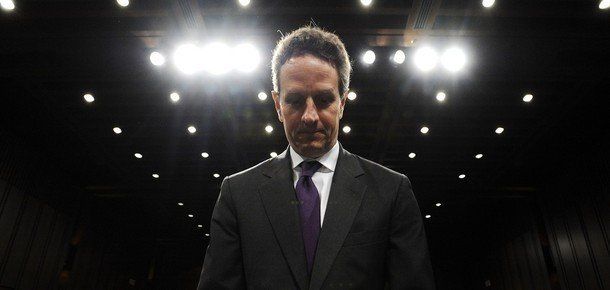
The White House is downplaying a government watchdog's harsh assessment about the lack of transparency in the financial industry bailouts by arguing that the money they are lending is, in many ways, untraceable.
On Tuesday, Neil Barofsky, the special inspector general for the Troubled Asset Relief Program (SIGTARP), and several congressman on the House Committee on Oversight and Government Reform criticized the Treasury Department for not adequately accounting for the hundreds of billions of dollars it has loaned to troubled banks. In particular, Barofsky testified that Treasury has failed to institute rudimentary of reforms including requiring bailout recipients to track just where, exactly, they are spending taxpayer funds.
The hearing acknowledged some of TARP's successes, including the prevention of an even worse financial downturn. But for an administration that came to office on promises of unprecedented transparency, such complaints over the secrecy of the program seem a likely disappointment.
Press Secretary Robert Gibbs energetically disputed the findings during Tuesday's daily briefing. The money that has been loaned to the banks, he argued, was not "followable" because of its "fungibility" on the books of the major financial institutions.
"I think that Treasury Department puts out monthly reports on the lending activities from banks," Gibbs said. "Again one of the suggestions was, in some ways being able to follow what might not be, according to us, followable. In other words you have the fungibility of money that is not put in a separate TARP lending account for the deposit and guarantee in Auburn, Alabama, for us to measure the increase in lending. The administration believes that that transparency is important but can be done better in measuring the increase in that lending. But it is going to be hard to follow, again, something as fungible as money moving from one bank to the other."
Gibbs' answer was the same the Treasury has given to Barofsky, much to SIGTARP's dismay. Asked to explain how the White House was ensuring that the TARP funds were actually being used to spur lending, Gibbs noted that the economic collapse -- at least as it pertains to Wall Street -- no longer seems quite so omnipresent. Though the economy has a long way to go, he added.
"I think to the point where you have seen already this year, upwards of $70 billion paid back to the federal government from lending institutions, which might denote that there is some watching going on from Washington," Gibbs said.
"One of the ways we are going to increase lending is to get this economy moving again," he added. "It is a little bit of a push and pull. Is the economy going to expand until or unless a small business can get the credit it needs to expand? And vice versa. And I think the president strongly believes we have to see an increase in lending. I think it is pretty safe to say when the president took office in January that we were headed, as many have described in this administration, for an economic catastrophe. Many businesses couldn't find, didn't have access to, the capital and the credit that they needed and many banks, as we discussed in this room a lot, were in peril. We are now seeing banks being able to raise their own capital and I think we have seen some increase in lending activity. Obviously the president doesn't believe that is enough because we still have a long way to go in fixing the economy."
